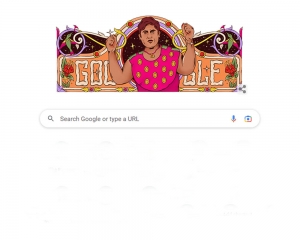The most powerful speech of the nation – Prime Minister’s address from Red Fort on August 15 last year was ornamental with the elixir of life – “Water”. A new flagship programme launched on the day, named “Jal Jeevan Mission” (JJM) aiming at ensuring “functional household tap connection” (FHTC) to all rural households across the nation within an ambitious five year. Though the programme looks pretty Herculean task, but looking at the performance under the “Swachh Bharat Mission” – another flagship programme for ensuring household toilets to families across the country declared in the first spell of current Government at the Centre, it creates a hope that the task can be accomplished.
Starting from a mere 18.33 percent of rural household level, water supply – reaching 100 percent within a span of five years – with an ambitious budget of Rs 3.5 lakh crore – it looks like the programme is going to make “water woes” of rural India a history. But the fundamental question arises is, do we have enough water resources to meet the need?
The infrastructure created so far to ensure drinking water availability in rural India is roughly around 40 litre per capita per day (lpcd) and the JJM intend to ensure at least 55 lpcd through FHTC. So, the amount of additional water required per day is going to increase substantially.
Besides, it has to be ensured that the FHTC does not mean that the consumption of water per head will remain strict to 55 lpcd. There are ample instances, where the water supply at household level has been ensured, the pattern of use of water has drastically been changed.
Another aspect is, the surface water bodies created so far are primarily not for drinking and domestic water purposes. Rather they are more towards livelihood (agriculture) and economic (power generation/ industries/ meeting urban water requirement) purposes and mostly governed by wings of Government not responsible for drinking and domestic water. Considering the existing inter-departmental relationship, adding water requirement for drinking and domestic purpose to those water bodies is a time consuming and non-viable action compounded with already existing competing use of water from those water bodies. Important to mention that, though at the Centre, all the departments dealing with water have been brought under one umbrella named “Jal Shakti Ministry”, but water being a State subject under Indian Constitution, there is no such scenario in any State.
Besides, changing climate and erratic precipitation has further elevated the non-reliance on surface water bodies towards provisioning of water for drinking and domestic purposes.
Though source sustainability measures like aquifer recharge, rain water harvesting, increased storage capacity of water bodies, reservoirs, de-silting, etc. to improve the lifespan of water supply systems is integral part of water supply infrastructure under JJM, but question arises, will those really be integral part? Experience shows, in many places, rain water harvesting being an integral part of any new building has confined to design of the building only. When priority is ensuring FHTC within five years’ time, accountability will be more towards supply system than ensuring source sustainability measures. And what is the monitoring mechanism for source sustainability measures?
Considering the anticipated hike in water requirement for drinking and domestic purposes and dramatic alleviation in the pattern of use of water by communities after the FHTC is ensured, ground water will further be dried up. In such scenario, we do not have any excuses to treat source sustainability measures as secondary action. As guided by JJM, source sustainability measures to be an integral part of the water supply infrastructure and water supply infrastructure should not be looked as “pipe water supply to household” in isolation. Besides, we have to be more tilted towards depending on surface water bodies to create water supply infrastructure instead of ground water. Otherwise, intention of bringing revolutionary change in water supply system to address water woes of people will end up with a greater water crisis – having hardly any scope for rectification.
Huge resources are put in place for realising the dream of FHTC and should not be drained in counting FHTC only. The FHTC should be a means to erase the water woes of people, not the end in itself. Rain being the only source of fresh water, let's harvest as much as possible and harness all water sources we have currently. And let’s be accountable for that as well!
(The author works with WaterAid India, Bhubaneswar. The views expressed are personal)

























